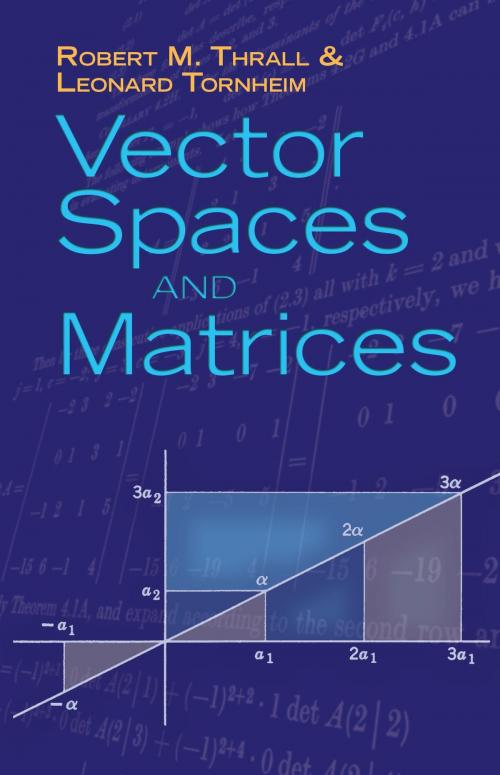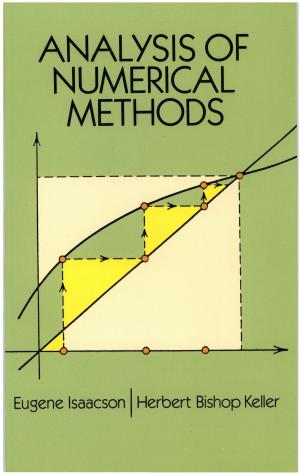| Author: | Leonard Tornheim, Robert M. Thrall | ISBN: | 9780486321059 |
| Publisher: | Dover Publications | Publication: | January 15, 2014 |
| Imprint: | Dover Publications | Language: | English |
| Author: | Leonard Tornheim, Robert M. Thrall |
| ISBN: | 9780486321059 |
| Publisher: | Dover Publications |
| Publication: | January 15, 2014 |
| Imprint: | Dover Publications |
| Language: | English |
This text, designed for courses in linear algebra or for supplementary use by students in such courses, possesses the distinct advantage of approaching the subject simultaneously at two levels: the concrete and the axiomatic. Each new property of a vector space is discussed first at one level, then the other. Thus the student is introduced to the elegance and power of mathematical reasoning on the basis of a set of axioms; the gap is bridged between emphasis on problem-solving and the axiomatic approach of much of modern mathematical research; and the frequent return to concrete formulations helps keep the student’s feet on solid ground. The text is designed to develop understanding and conceptual grasp, rather than mere manipulation.
The early chapters supply a far more detailed exposition than found in many texts, important for the student having his first experience with mathematical rigor. Concepts of vector space, linear transformation, and matrix are presented, then applied to solution of systems of linear equations. A self-contained development of the theory of determinants is given; the student is introduced to the general concept of invariant; then to the theory of similarity. Exposition of the bilinear and quadratic forms and of orthogonal equivalence follow. The last four chapters are more advanced in nature and the level of treatment somewhat higher. The standard theory of polynomials in one indeterminate is given; the development of the general theory of simple algebraic extensions of a field is presented in a form that can be used as a foundation for Galois theory and also for the general similarity theory. The standard canonical forms for matrices with integral or polynomial elements are presented, followed by the similarity theory, with applications to geometry and to differential equations. The final chapter provides an introduction to the important topic of linear inequalities, often neglected in elementary texts on matrix theory. The objective is to provide the student with sufficient background to read books and papers on game theory and linear programming. Exercises follow each exposition.
This text, designed for courses in linear algebra or for supplementary use by students in such courses, possesses the distinct advantage of approaching the subject simultaneously at two levels: the concrete and the axiomatic. Each new property of a vector space is discussed first at one level, then the other. Thus the student is introduced to the elegance and power of mathematical reasoning on the basis of a set of axioms; the gap is bridged between emphasis on problem-solving and the axiomatic approach of much of modern mathematical research; and the frequent return to concrete formulations helps keep the student’s feet on solid ground. The text is designed to develop understanding and conceptual grasp, rather than mere manipulation.
The early chapters supply a far more detailed exposition than found in many texts, important for the student having his first experience with mathematical rigor. Concepts of vector space, linear transformation, and matrix are presented, then applied to solution of systems of linear equations. A self-contained development of the theory of determinants is given; the student is introduced to the general concept of invariant; then to the theory of similarity. Exposition of the bilinear and quadratic forms and of orthogonal equivalence follow. The last four chapters are more advanced in nature and the level of treatment somewhat higher. The standard theory of polynomials in one indeterminate is given; the development of the general theory of simple algebraic extensions of a field is presented in a form that can be used as a foundation for Galois theory and also for the general similarity theory. The standard canonical forms for matrices with integral or polynomial elements are presented, followed by the similarity theory, with applications to geometry and to differential equations. The final chapter provides an introduction to the important topic of linear inequalities, often neglected in elementary texts on matrix theory. The objective is to provide the student with sufficient background to read books and papers on game theory and linear programming. Exercises follow each exposition.















